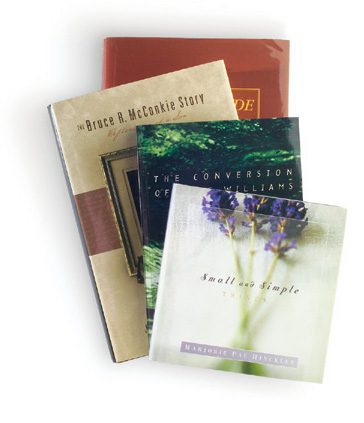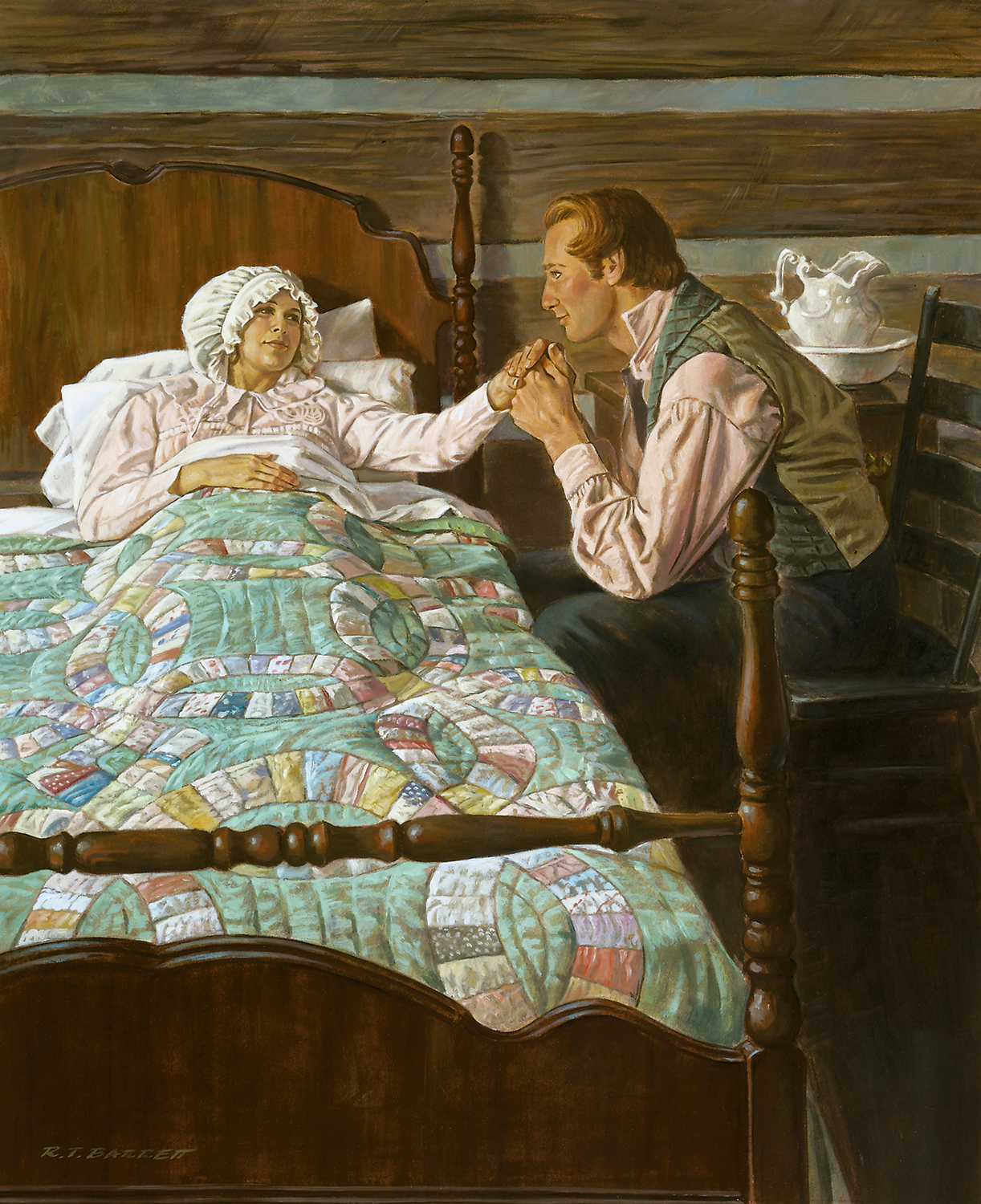The award-winning Mapping Mormonism will teach you something new about Church history—past and present.
The award-winning Mapping Mormonism will teach you something new about Church history—past and present.
Take just about any topic—even something you’ve heard about thousands of times. “Look at it on a map, and it makes you think about it differently,” says geography professor Brandon S. Plewe (BS ’92).
His new work, the award-winning Mapping Mormonism: An Atlas of Latter-day Saint History, is proof, bringing new light to familiar Church topics—and uncovering new ones.
From the Restoration to modern day, the atlas covers much more than the physical terrain of Latter-day Saint history. It dissects member demographics, Church growth, missionary work, humanitarian aid—you name it. One can learn about congregations in Afghanistan and when the Church had a stronghold in the U.S. Bible Belt; one can see the relative footprint of every temple on the planet and various meetinghouse plans. Even Church-history experts can learn something.
Part reference work, part coffee-table book, the atlas promptly sold out when BYU Studies released it in fall 2012. Half of the second printing has now sold too.
The work also won the 2013 Best Book Award from the Mormon History Association and was named best atlas of the year in the Cartography and Geographic Information Society Map Design Competition—North America’s top cartography competition, according to judge Daniel Cole, geographic information systems coordinator of the Smithsonian Institution. “National Geographic didn’t hog all the categories this year,” says Cole. “We were pretty impressed with the Mormon atlas.”
In the following, explore the early Church, its membership, temples, and more in a smattering of visuals lifted from the atlas—some of them updated with new data since the atlas’s 2012 publication just for BYU Magazine.
The Early Church
Unusual Excitement
Critics and apologists have long debated the veracity of one facet or another of Joseph Smith’s record. One is whether revivals really took place in Palmyra or nearby villages around 1820. The atlas plots at least 30 revivals, large conferences, and foundings of new churches between 1816 and 1821 within 20 miles of the teenaged Joseph Smith. By his own account, Smith was drawn to the Methodist revivals, as was Emma Hale, his future wife.
Surveying the Salt Lake Valley
Looking south into what would become Salt Lake City, this may have been the Mormon pioneers’ view in 1847 of the valley, a land mostly covered in prairie grass. The first scouts from the vanguard pioneer company were already plowing fields when Brigham Young arrived and made his iconic statement: “This is the right place; drive on.” The Saints surveyed the area with scientific implements procured by John Taylor in England for the trek, tools that allowed Orson Pratt to determine the longitude, latitude, and elevation of significant landmarks.
Founding Branches
Today it’s easy to imagine the Saints moving as a block from one frontier settlement to another during the Kirtland and Nauvoo periods, but records reveal small but viable branches throughout the eastern United States. Fewer missionaries served in the South, resulting in isolated branches built up by dedicated long-term missionaries like Jedediah Grant and Wilford Woodruff. Branches were instructed to hold quarterly regional conferences to strengthen each other. Branch names and more can be found at mappingmormonism.byu.edu.
The Expanding Church
Membership and Annual Growth
The Philippines rival the entire continent of Africa in size in this cartogram, a map distorted to convey a specific piece of information—in this case, the number of Latter-day Saints in each country. Yet Africa and parts of Asia also have the highest current annual growth in Church membership.
Missionary Force
The end of 2012 hinted at a surge in missionary numbers—a result of the October 2012 announcement that changed the age for missionary service and created a stir in wards everywhere. The change’s long-term effects remain to be seen, but missionary numbers had previously slowed due to a demographic plateau of mission-aged men and women in the Church and a raised bar for eligibility.
Where Leaders Are Born
Think most General Authorities are from Utah? That may have been the case at one time—and of course in the early Church most leaders were from the East—but the distribution is changing, trending toward more and more diversity.
To Every Nation
The United States dominates no more; the country is now home to less than half of Church members worldwide. The residence of Church membership through time reveals many trends. Canada has somehow retained its share of the membership pie, maintaining a growth rate mirroring that of the Church as a whole. A surge of growth in Latin America fanned out beginning in the ’60s. Africa may be next; though small now, it is growing faster than any other region.
Future Growth
How fast will Church membership grow in the years ahead? With no shortage of guesses, the atlas outlines eight predictions, all somewhat close except the highly optimistic trajectory from sociologist Rodney Stark that reaches 55 million members in 2040. Atlas editor Brandon Plewe and geography professor Samuel M. Otterstrom (BS ’90, MS ’94) developed their own model (see the red line) based on the percent of Latter-day Saints per region.
Putting Down Stakes
The presence of stakes in an area reflects the maturity of the Church in the region. Before 1923 stakes existed only in the belt of Mormon settlements from Canada to Mexico. But in the ensuing century, stakes cropped up beyond that corridor—in Los Angeles in 1923, outside of North America (Hawaii) in 1935, and outside of the United States (New Zealand) in 1958. The first non-English-speaking stake: The Hague, Netherlands, in 1961. A record 146 stakes were created in one year (1996). Today there are more than 2,900.
Tracking Temples
Dotting the Globe
With 171 temples operating or planned around the globe, the average distance of members from temples, once more than 500 miles, is now down to 100 miles. See the location and relative footprint of every temple—standing, proposed, or under construction—in the world.
Temple Timeline
After nearly 200 years of temple building, the largest temple is in Salt Lake City; the smallest is in Colonia Juárez, Mexico—the model for the surge of small-temple construction worldwide. Several temples were designed for unique purposes, like the temples in Los Angeles and Washington, D.C., for maximum visibility, or in Hong Kong and Manhattan for urban efficiency. The temples in Provo and Ogden, Utah, were designed to accommodate numerous patrons—and are still among the busiest.
Regional Close-Up
United States and Canada in 2013
The five states with the largest Mormon populations account for almost 80 percent of total membership in the United States and Canada. In Utah, members make up nearly 68 percent of the state population. California has the most missions. Almost every state and Canadian province has a temple. Additional pages in the atlas delve into history, growth, and stateside missionary work in greater detail, comparing, for example, where growth is primarily from outmigration from Utah versus homegrown conversion.









